7 best plants to grow on a wall
These are the best climbing plants to cover a wall

If you’ve got an unsightly wall outside a window and you want to improve your view, climbing plants can really liven up that dreary vista. And even if it’s not in your direct view, a plain boring wall can ruin the look and feel of your yard, so when choosing plants, don’t forget those climbers that’ll cover walls and add vertical greenery.
Some climbers are more vigorous than others and some can even damage the surface they’re climbing up. It’s therefore important that you take the time to choose carefully so you get the right climber for your particular wall.
There are plenty of climbing plants that are happy on a wall, from fantastic flowering plants that’ll add vibrant color and joy, to evergreen plants for year-round interest. We’ve picked our top seven, but you may also be interested in our favorite plants to create privacy in your backyard.
We've also found 7 best plants for hanging baskets for added décor and 9 plants that can grow on rocks.
1. Climbing roses
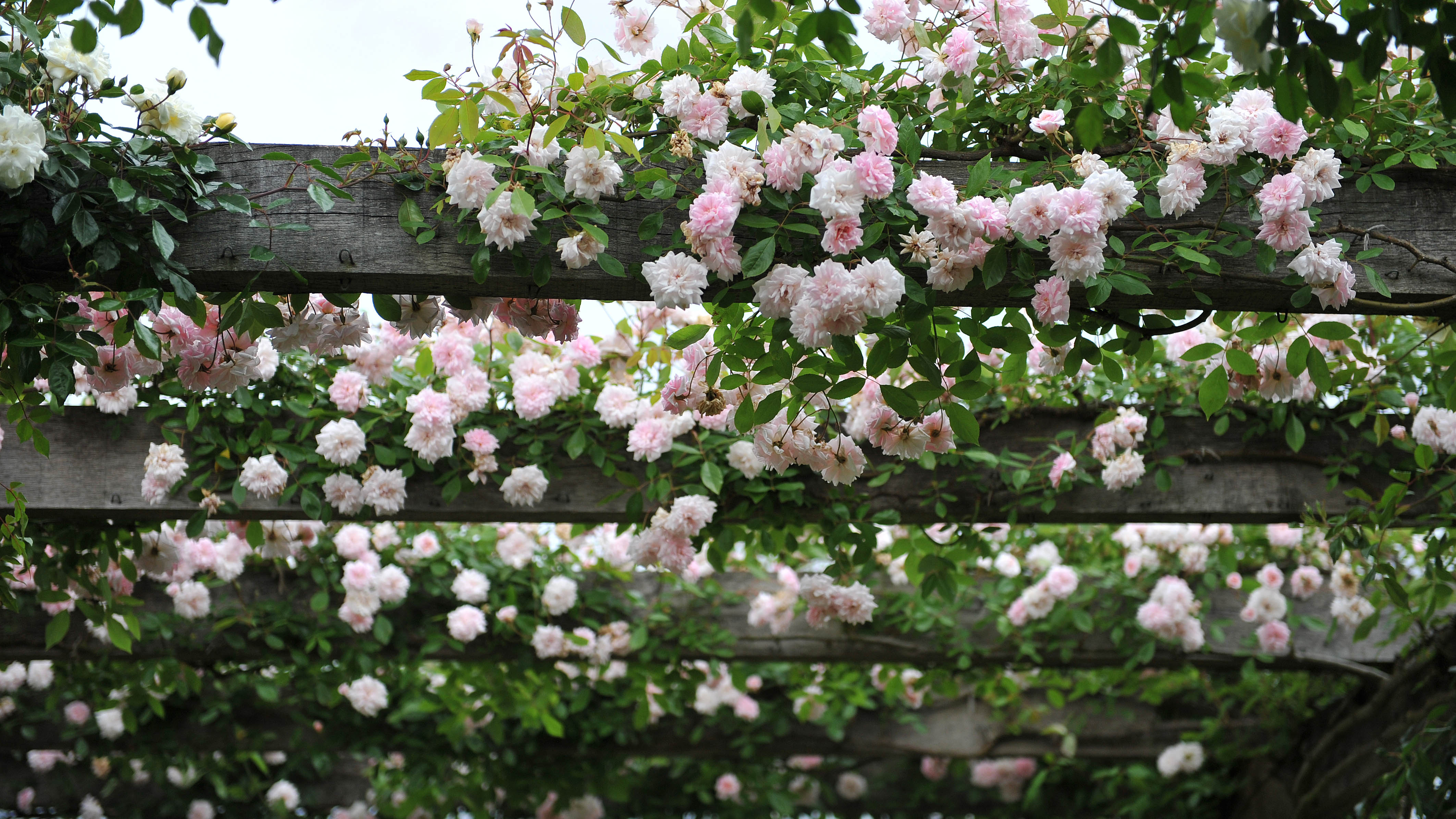
The rose is such a common and beloved garden plant it really needs little-to-no introduction. If you want to cover a wall though, you’ll need a climbing variety. One of the great benefits of choosing a rose, is that it’ll produce beautiful and fragrant blooms that’ll elevate your wall to a vertical floral display.
There are hundreds of rose varieties to choose from, you can select your favorite flower color or choose between large or small blooms. And with varieties that can grow up to 15 feet, you’ll easily be able to find the right one for you, no matter how big the wall you’re trying to cover.
But note, climbing roses don’t suck on to the wall, so you’ll need to give it a helping hand by training it along wires or trellis. This involves tying the stems and branches to something that’ll support them as well as encourage them to grow across your wall.
Sign up to get the BEST of Tom's Guide direct to your inbox.
Get instant access to breaking news, the hottest reviews, great deals and helpful tips.
Here’s how to deadhead roses to keep them blooming and how to prune roses with the best pruning shears.
2. Wisteria

Wisteria is a climbing vine that clings onto vertical surfaces like walls by twisting its stems around whatever it can find. It can grow vigorously, so if you’ve only got a small wall to cover, it might not be the best choice. But for larger and taller walls, it can provide extensive coverage.
It produces delightful large drooping lilac or purple flowers, sometimes twice a year. It does need regular pruning to keep it under control, so it’s not the most low maintenance option. And it’s not advisable to plant it too close to your house, as it will climb anything and could cause damage to parts of your house.
A wisteria loses its leaves in winter, so it won’t provide year-round coverage - something to keep in mind if you’re trying to cover an ugly wall. That said, if you’ve got a sunny wall and want an impressive display of flowers it’s a beautifully elegant climbing plant that lives for many years.
3. Ivy
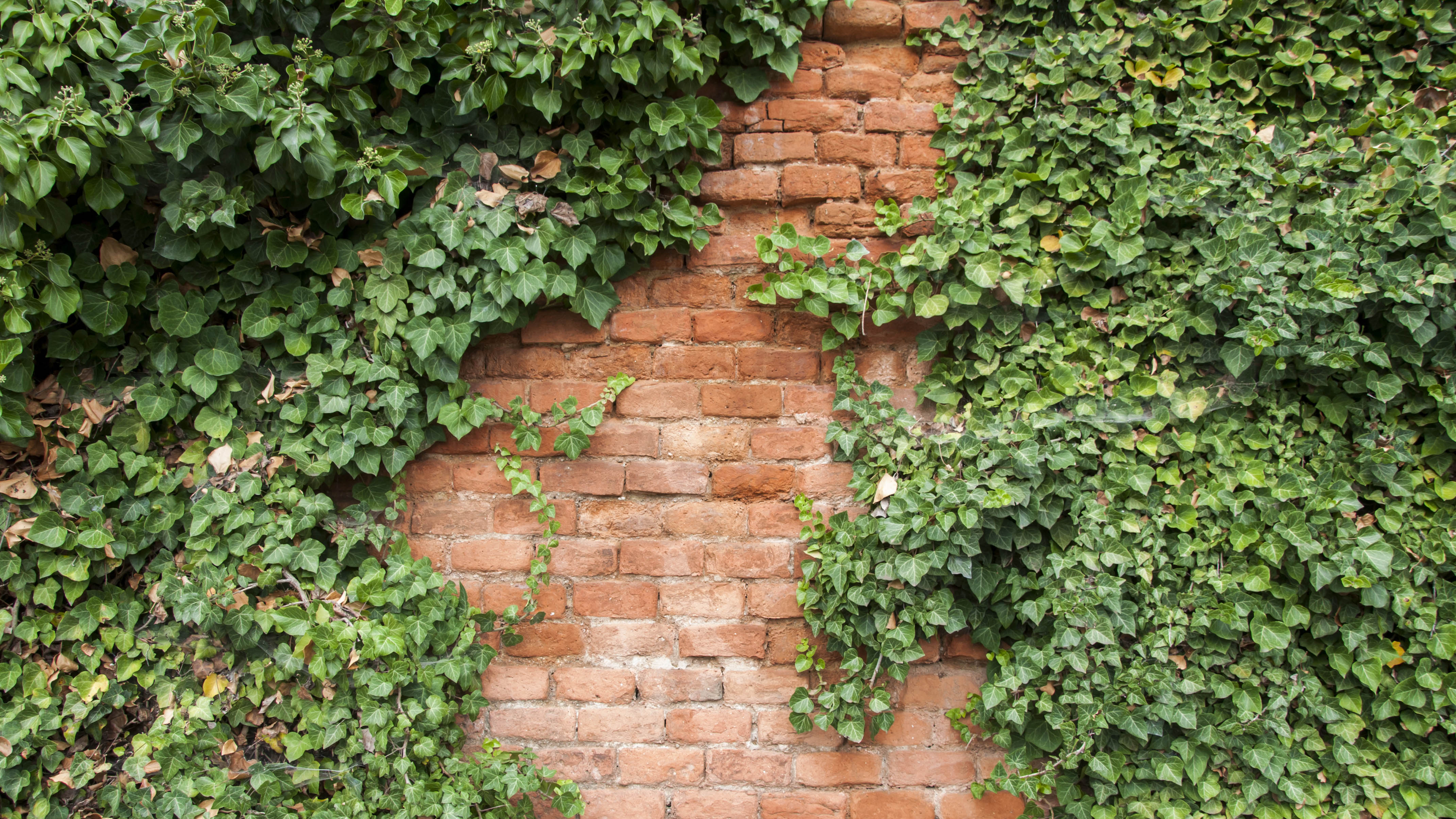
Ivy is one of the best known plants for growing on, and covering a wall, but it can damage the surface it grows on, so is a somewhat controversial addition to the list. However, in a lot of cases the damage happens mostly when removing the ivy. Only you can decide whether you’re willing to take the risk and it’ll depend on the type and age of the wall you’re looking to cover, but we wouldn’t recommend allowing it to grow up your house.
Boston ivy and English ivy are two of the most common varieties for covering a wall. English ivy is fast growing, but not as fast as Boston ivy, and its evergreen leaves are smaller. Meanwhile, Boston ivy is a deciduous plant that turns red and orange in the fall, providing a stunning colorful display.
In many areas (such as the Pacific Northwest and California) English ivy is considered an invasive species. Boston ivy is the less aggressive and less destructive of the two, we're recommend opting for that. If you do choose English ivy, it may be worth consulting a local extension office to confirm that it's okay as the plant can be capable of damaging brickwork.
4. Passion Flower
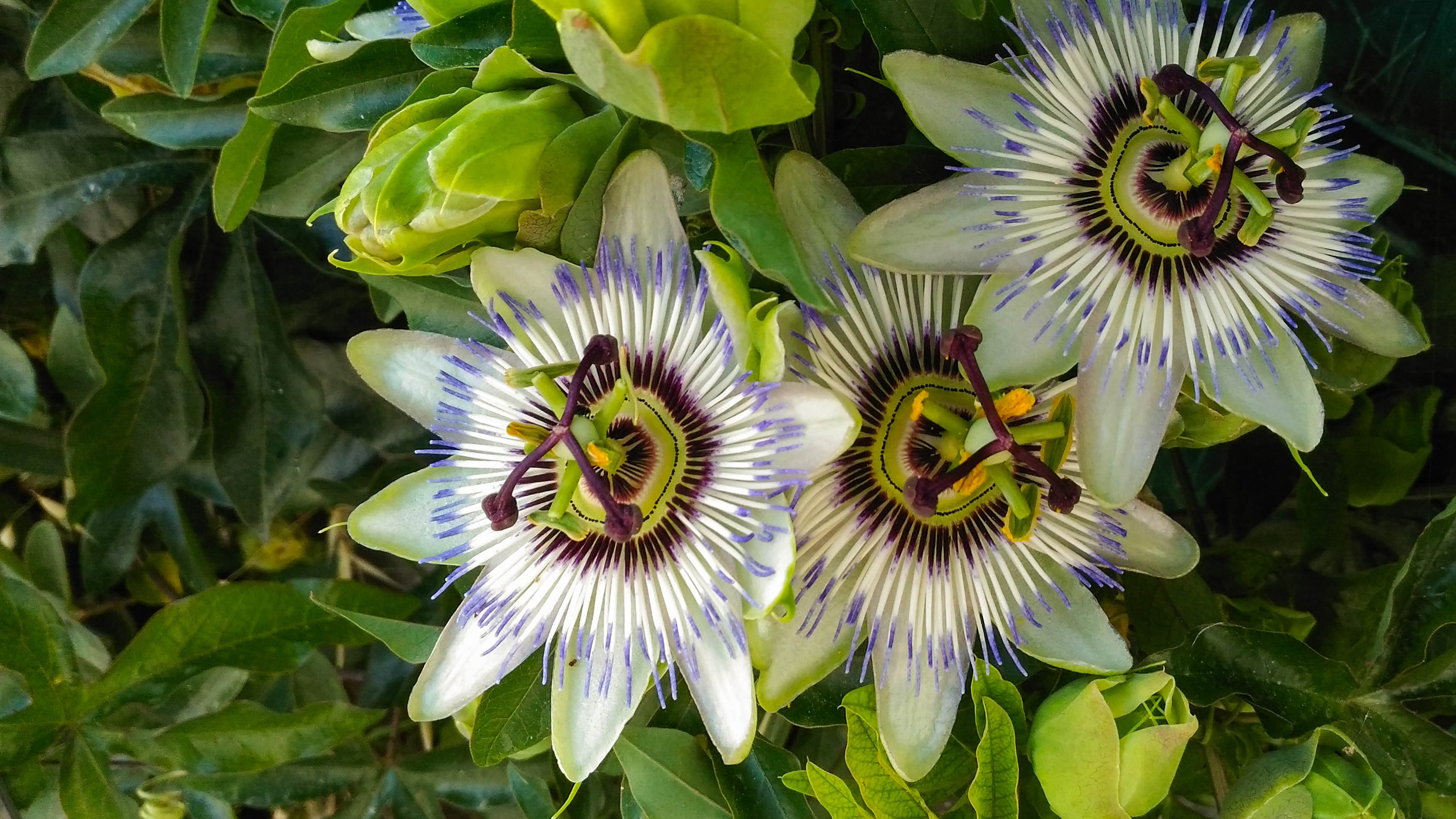
Native to the Southeastern U.S. this flowing vine loves a sunny wall. It produces the most exquisite, intricate flowers that are stunningly unique. They’ll provide a beautiful distraction from your wall, and be the talk of your neighbors. Passion flower is easy to grow and won’t damage brickwork or walls.
The flowers are loved by butterflies and will also attract bees and hummingbirds. It can grow up to 8 feet tall and 6 feet wide depending on the variety and conditions. The flowers tend to be pinks and purples, but vary depending on the particular variety you chose.
When the plant is young, it may need a cane or wire to grow up, but mature plants have self clinging tendrils so it should happily hold itself onto the wall without support. Most passion flowers are evergreen, so it’ll provide some leafy coverage even in winter.
5. Trumpet vine
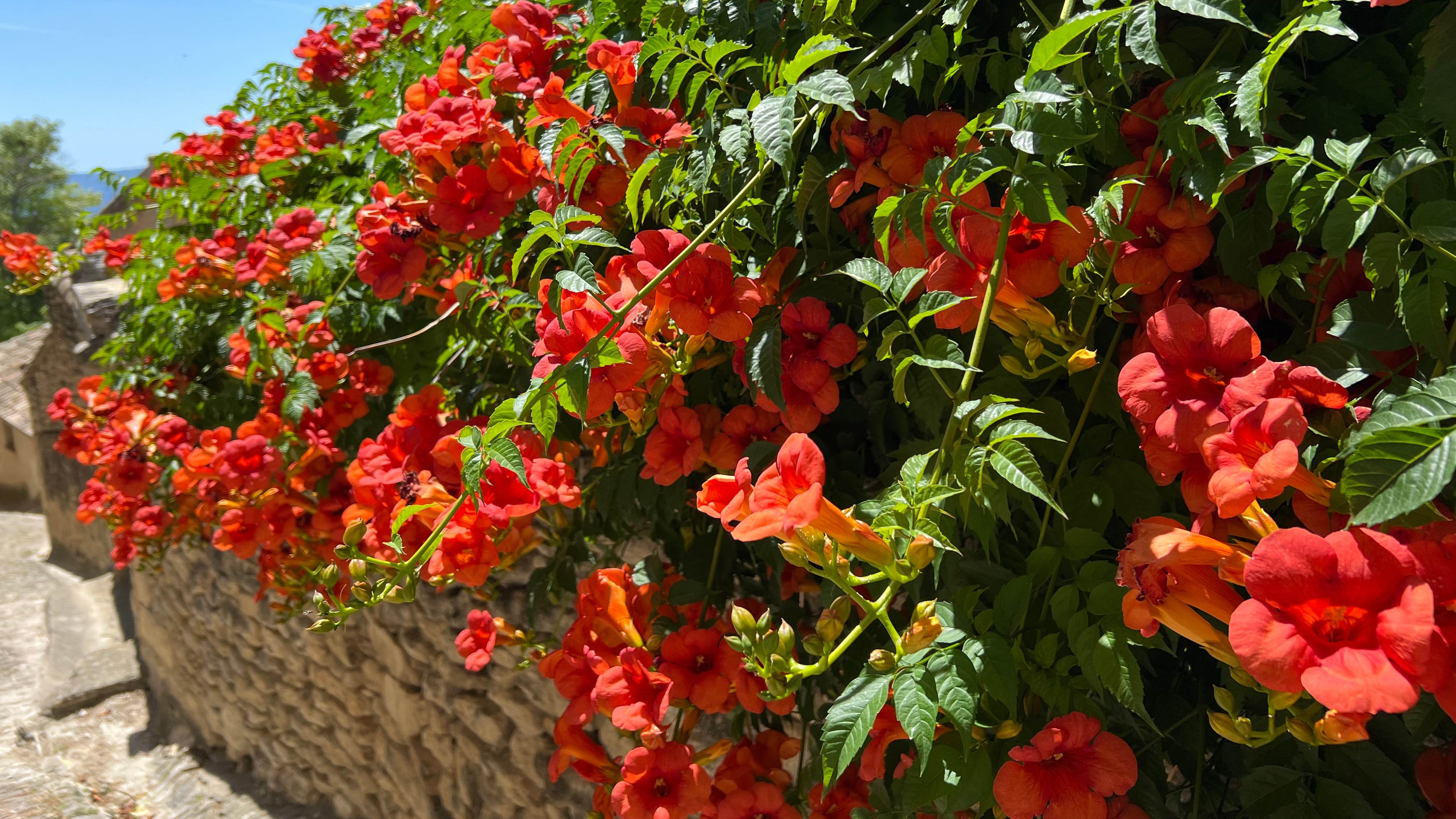
Unsurprisingly, the trumpet vine gets its name thanks to the trumpet shaped flowers it produces. The flowers are usually shades of yellow, orange, and red and at around 3 inches long, they have a big impact when grown up a wall, plus they attract pollinators and hummingbirds.
It’s quite a vigorous vine and needs regular pruning to keep it under control. But if you put the effort in, it’ll provide good coverage. But don’t choose it if you want a low maintenance option, because if left to its own devices, it can choke out other plants and become overgrown quickly. We’d advise researching varieties and choosing one of the less aggressive cultivars.
It will lose its leaves in winter, so your wall won’t be blanketed year-round. And like many vines, it prefers a sunny location, so pay attention to how much sun your wall gets.
6. Clematis
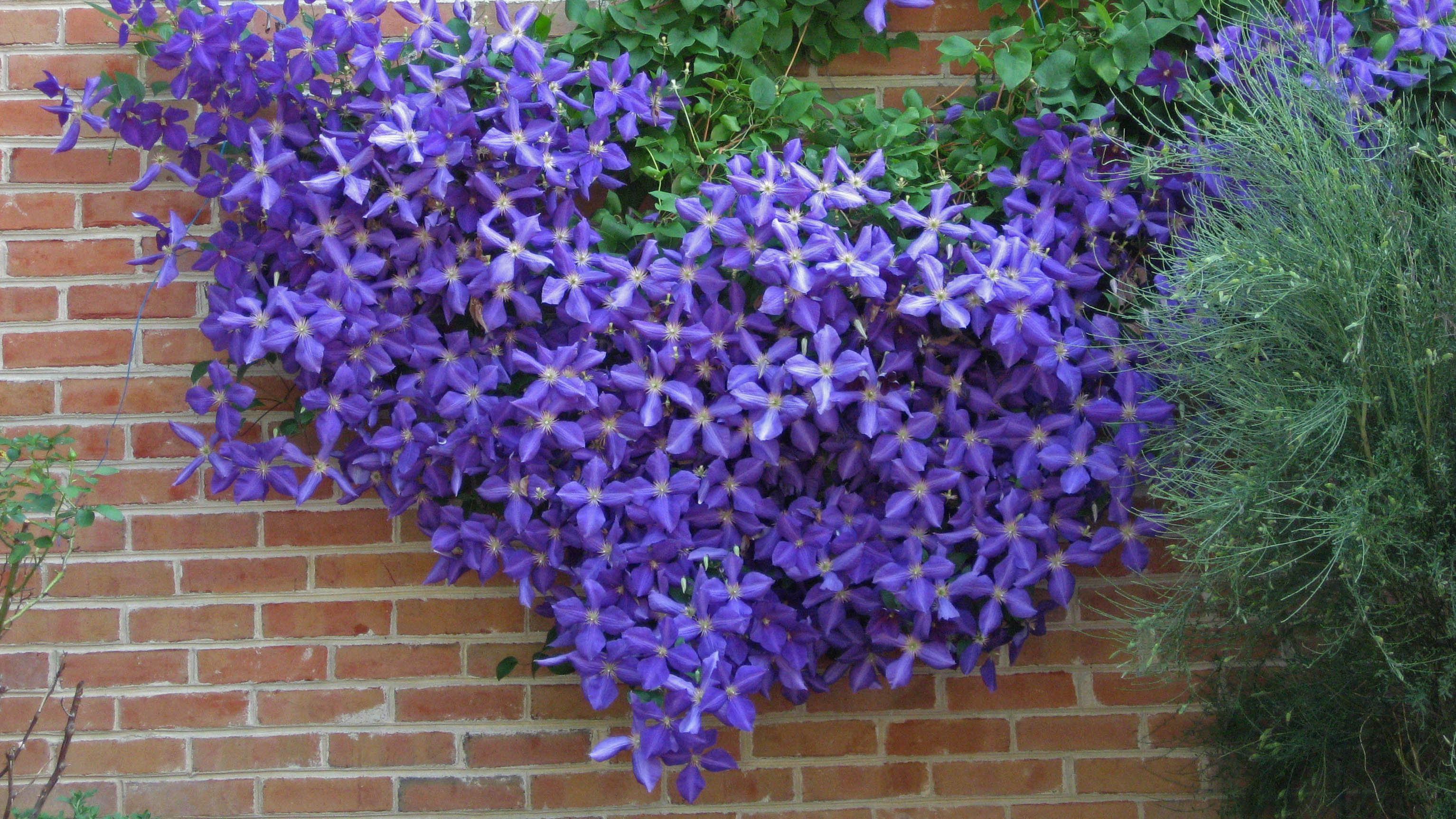
Clematis can be grown to cover a wall as long as you attach a trellis or string some wire in front of the wall for it to grab on to. It’s not as aggressive as some climbers and if its leaf stems can’t find anything to wrap around, this can cause it to stop growing.
There are multiple varieties and cultivars to choose from, giving plenty of options when it comes to the flower color. The potential height and spread can vary significantly, so check the variety to make sure it has the potential to cover your wall.
Most clematis like a minimum of six hours of direct sunlight per day, so it won’t suit a very shaded area. Some varieties can take a few years to mature enough for vigorous flowing, but when they do, the blooms can be quite magnificent.
7. Jasmine
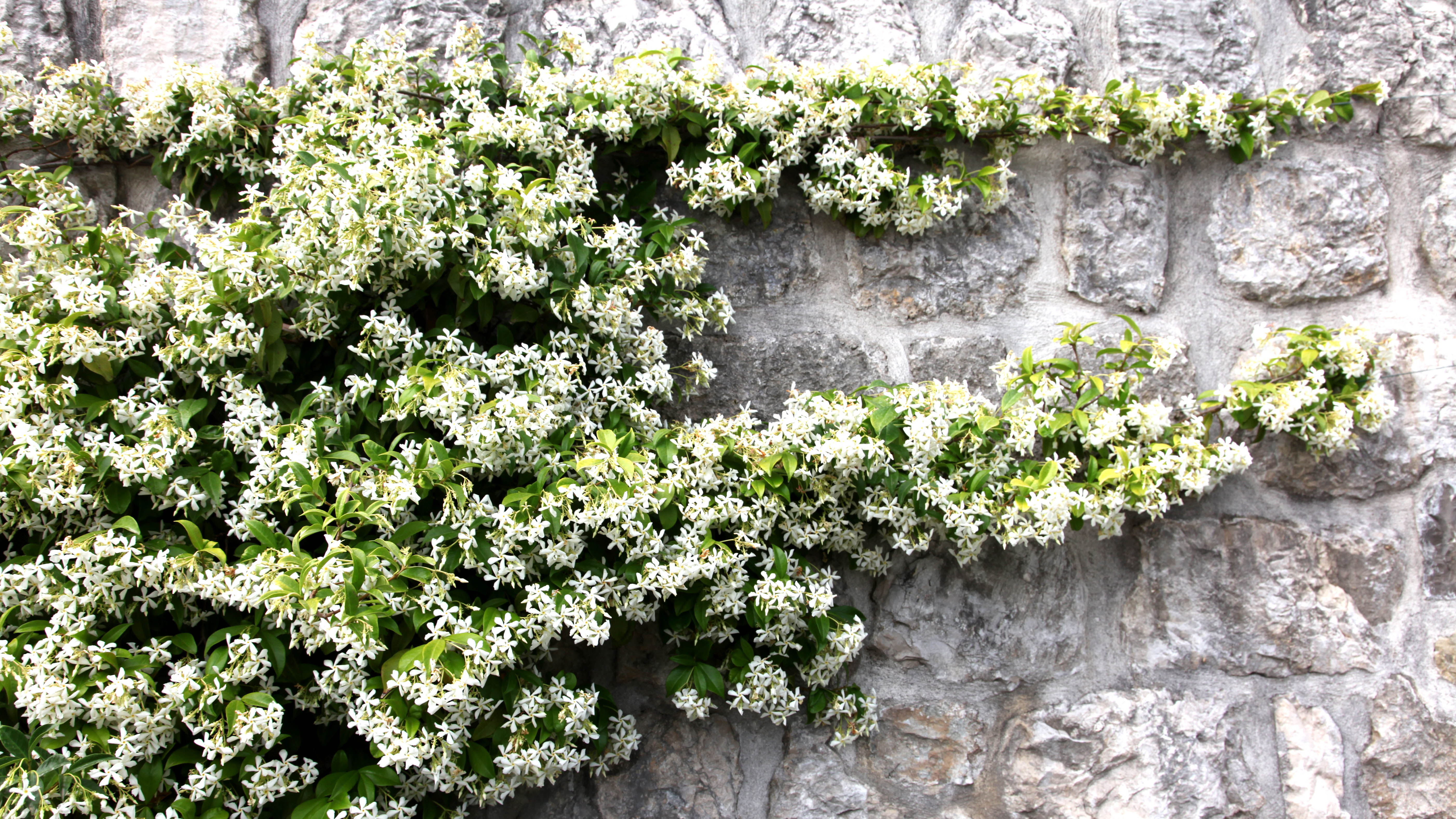
There are so many different jasmines to choose from including star jasmine and winter jasmine, you’ll be sure to find a variety that suits. This flowering plant is available in an array of colors and there are both deciduous as well as evergreen jasmines.
Some jasmines will fill your yard with exotic scents, while other varieties are less scented. Again, with so many varieties to choose from, you’ll need to do your research and get the right one. There are jasmines that are grown more like shrubs and others that are vines and will cling to wires and trellis to cover your wall.
More from Tom's Guide
Helen started reviewing home and kitchen appliances in 2007 at the Good Housekeeping Institute and has never looked back. She’s now freelance and reviews all sorts of appliances from her home in a pretty village in the UK. Despite having reviewed hundreds of coffee machines in her time, she’s only recently developed a love for coffee and a daily coffee habit, which makes tasting all those coffees much more enjoyable!

